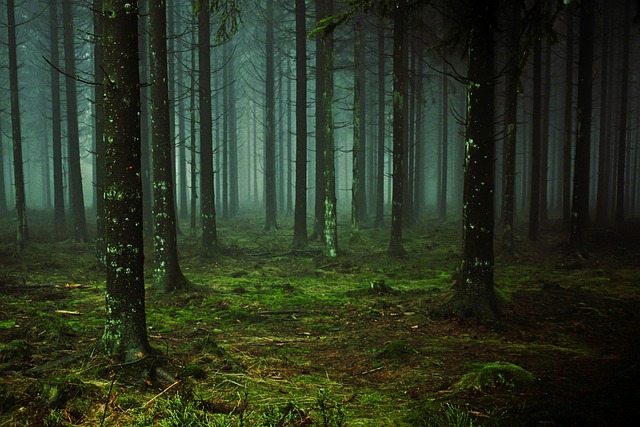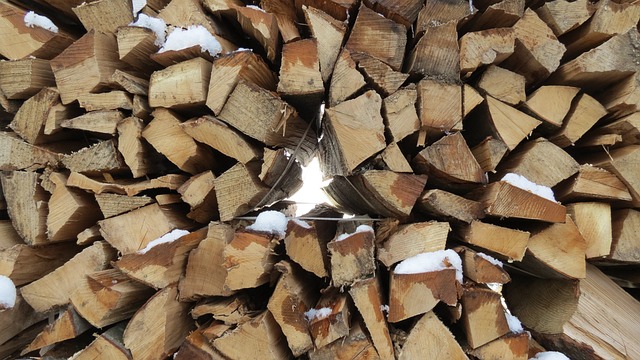Can you use pine for firewood? If you’re someone who loves cozy evenings by the fireplace or enjoys the crackling warmth of a wood-burning stove, you’ve probably wondered about the suitability of pine as firewood.
Yes, you can use pine for firewood. Pine is readily available, affordable, and easy to ignite. However, it has a higher resin content, which may lead to increased smoke and creosote buildup. With proper precautions, such as regular chimney maintenance, pine can be a suitable and enjoyable option for firewood.
In this article, I’m going to dive deep into the world of pine firewood, exploring its pros and cons so you can make an informed decision. So, grab a cup of your favorite beverage, settle in, and let’s get started!
Understanding Pine as Firewood
Before I delve into the pros and cons of using pine as firewood, let’s take a moment to understand what pine wood is all about. Pine is a type of softwood that is widely available and commonly used for various purposes, including construction, furniture, and yes, you guessed it, firewood!
Now, let’s explore some of the advantages of using pine as firewood. First and foremost, pine is known for its affordability and widespread availability. It’s often easier to find pine firewood compared to other hardwood varieties, making it a convenient choice for many people. Plus, it’s usually more budget-friendly, which is always a win!
Another benefit of pine is its ease of ignition. Thanks to its resinous nature, pine wood tends to catch fire quickly and burns well. If you’ve ever struggled to start a fire with damp or stubborn wood, you’ll appreciate the convenience of using pine as it can be a reliable option for kindling or getting your fire roaring in no time.
One of the pleasant surprises of burning pine is its delightful aroma. The scent of burning pine can create a cozy and inviting atmosphere in your home, adding to the overall experience of a crackling fire. It’s like nature’s own air freshener!
However, it’s important to address some of the concerns and misconceptions associated with pine as firewood. One common worry is its high resin content. Pine has a higher resin content compared to other hardwoods, which can lead to more smoke and the potential for increased creosote buildup in your chimney. We’ll explore these concerns in more detail in the next section and provide tips on how to mitigate any associated risks.
So, now that you have a better understanding of what pine as firewood entails and some of its advantages, let’s move on to exploring the pros and cons in greater detail. Get ready to weigh the scales and make an informed decision about using pine as your firewood of choice.

Pros and Cons of Using Pine for Firewood
Now, let’s dive into the pros and cons of using pine as firewood. Like any other choice, there are advantages and disadvantages to consider. Let’s explore both sides of the coin:
Pros of Using Pine as Firewood:
- Availability and Affordability: Pine is widely available in many regions, making it easily accessible for firewood purposes. Whether you live in a rural area or a bustling city, you’ll likely find pine firewood without much trouble. Additionally, pine is often more affordable compared to hardwood varieties, allowing you to save some extra cash while enjoying the warmth of a cozy fire.
- Ease of Ignition: If you’ve ever struggled to start a fire, you’ll appreciate pine’s flammability. Thanks to its resinous nature, pine ignites quickly and burns readily. It’s an excellent choice for kindling or for those moments when you need instant heat on a chilly evening. With pine, you can kiss those frustrating fire-starting struggles goodbye.
- Pleasant Aroma: One of the delightful perks of burning pine is the aromatic experience it provides. The distinctive scent of pine wood adds an extra touch of coziness to your home. The sweet and earthy fragrance creates a welcoming ambiance, making your fire-warmed space even more enjoyable. It’s like nature’s way of enhancing your fire-side relaxation.
Cons and Considerations of Using Pine as Firewood:
- High Resin Content: While pine’s resinous nature aids in its ignitability, it also means that it has a higher resin content compared to hardwoods. This can result in more smoke when burning pine, and excessive resin can create a buildup of creosote in your chimney. Creosote is a flammable substance that can increase the risk of chimney fires if not properly addressed. However, with proper maintenance and regular chimney cleaning, you can minimize these concerns.
- Creosote Buildup and Chimney Safety: To ensure the safe and efficient use of pine as firewood, it’s essential to be aware of the potential for creosote buildup. Regular chimney inspections, cleanings, and using appropriate burning techniques can help mitigate the risks associated with creosote. By taking these precautions, you can enjoy the benefits of pine firewood while keeping your home and chimney safe.
It’s important to note that while pine has its pros and cons, responsible usage and proper maintenance can help address and minimize any potential drawbacks. Now that I’ve explored the pros and cons, let’s move on to the best practices for using pine as firewood, so you can make the most out of this versatile wood option.
Best Practices for Using Pine as Firewood
Now that you understand the pros and cons of using pine as firewood, let’s explore some best practices to ensure you have a safe and enjoyable experience with pine as your choice of firewood:
- Proper Storage and Drying Techniques: To maximize the benefits of pine firewood, it’s important to store and dry it properly. Like any other firewood, pine needs to be seasoned before use. Seasoning involves allowing the wood to dry out, reducing its moisture content. This process typically takes around 6 to 12 months for pine. Ensure that your firewood is stored in a well-ventilated area, protected from moisture and rain. Consider using a firewood rack or stack the wood off the ground to allow for proper airflow.
- Combining Pine with Other Types of Firewood: While pine can be a great firewood option, it’s also beneficial to blend it with other hardwoods or suitable firewood varieties. Mixing pine with hardwoods like oak, maple, or birch can help balance the burn and provide longer-lasting heat. Hardwoods generally have a higher energy density and burn slower, while pine contributes to quick ignition and kindling. Experiment with different wood combinations to find the blend that suits your needs best.
- Responsible Firewood Usage: Using pine as firewood is best done as a supplementary or occasional option, rather than relying solely on it. By rotating your firewood selection, you can ensure a well-rounded and sustainable approach. It’s essential to practice responsible firewood usage by adhering to local regulations and guidelines. Additionally, consider sourcing your firewood from sustainable and environmentally friendly sources to promote responsible forest management.
Remember, while pine has its benefits, it’s important to balance its use with other wood varieties for optimal results.
FAQs
Here are some frequently asked questions (FAQs) that you might want to know.
Q1: Can pine firewood produce a lot of smoke?
A1: Pine firewood can produce more smoke compared to hardwoods due to its higher resin content. Proper airflow and ensuring the wood is well-seasoned can help reduce smoke production.
Q2: Is burning pine firewood bad for the environment?
A2: Burning pine firewood is generally considered environmentally friendly as long as it is sourced sustainably. It’s important to follow local regulations, avoid illegal logging, and support responsible forestry practices.
Q3: Can I burn pine firewood on a wood-burning stove?
A3: Yes, you can burn pine firewood in a wood-burning stove. However, make sure to follow the manufacturer’s guidelines and recommendations for the specific type of wood-burning stove you have.
Q4: How long does it take for pine firewood to properly season?
A4: Pine firewood typically takes around 6 to 12 months to properly season. It’s important to allow the wood to dry out completely before using it to ensure efficient and clean burning.
Q5: Can I use pine firewood for cooking or grilling?
A5: While pine firewood can be used for cooking or grilling, it’s generally not recommended. The high resin content and the potential for smoke can affect the flavor of the food. It’s best to opt for hardwoods specifically suited for cooking purposes.
Q6: How can I minimize creosote buildup when burning pine firewood?
A6: To minimize creosote buildup, ensure proper airflow by using a well-maintained chimney and having regular chimney cleanings. Burning seasoned and dry pine firewood can also help reduce creosote formation.
Q7: Can I use pine needles or pine cones as firewood?
A7: Pine needles and pine cones are not ideal as primary firewood due to their high moisture content. However, they can be used as kindling or as additional fuel once a fire is well-established.
Q8: Can I burn freshly cut pine as firewood?
A8: Burning freshly cut pine is not recommended as it has a high moisture content. Properly season the wood for several months to reduce moisture and ensure better burning efficiency.
Remember, it’s always a good idea to consult with local experts or professionals for specific questions related to your region or circumstances.
Conclusion
Well, there you have it, my firewood-loving friends! Pine, with its availability, affordability, easy ignitability, and pleasant aroma, can certainly be a viable option for your firewood needs. However, it’s essential to address the potential concerns of high resin content and creosote buildup.
By following best practices such as proper storage and drying techniques, combining pine with other firewood types, and practicing responsible usage, you can enjoy the benefits of pine while minimizing any drawbacks.
So, the next time you gather around your fireplace or wood-burning stove, consider giving pine a chance. Revel in the crackling flames, savor the cozy scent, and create cherished memories with your loved ones.
Remember, safety should always be a top priority. Regular chimney inspections, cleanings, and adherence to local regulations are essential to ensure a safe and enjoyable firewood experience.
I would love to hear about your experiences with using pine as firewood. Feel free to share your thoughts, tips, and stories in the comments section below. Let’s keep the conversation going!
Thank you for joining me on this firewood adventure. Stay warm, stay safe, and may your fires always burn bright. Until next time, happy burning!
You may want to read this post next: Is Sycamore A Hardwood? Exploring Its Wood Classification

